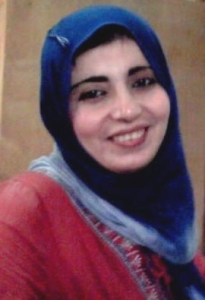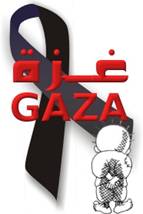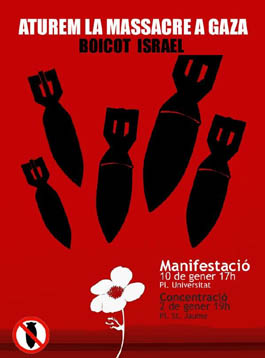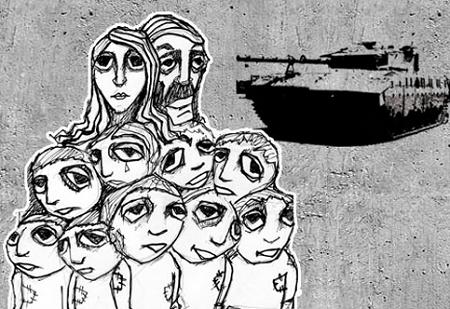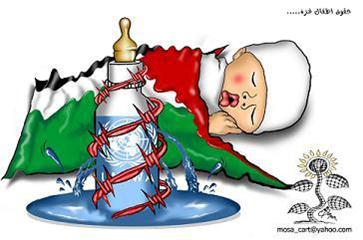The Economic and Social Crisis
The financial meltdown has unleashed a latent and emergent social crisis across the United States.
What is at stake is the fraudulent confiscation of lifelong savings and pension funds, the appropriation of tax revenues to finance the trillion dollar "bank bailouts", which ultimately serve to line the pockets of the richest people in America.
This economic crisis is in large part the result of financial manipulation and outright fraud to the detriment of entire populations, to a renewed wave of corporate bankruptcies, mass unemployment and poverty.
The criminalization of the global financial system, characterized by a "Shadow Banking" network has resulted in the centralization of bank power and an unprecedented concentration of private wealth.
Obama's "economic stimulus" package and budget proposals contribute to a further process of concentration and centralization of bank power, the cumulative effects of which will eventually resul in large scale corporate, bankruptcies, a new wave of foreclosures not to mention fiscal collapse and the downfall of State social programs. (For further details see Michel Chossudovsky, America's Fiscal Collapse, Global Research, March 2, 2009).
The cumulative decline of real economic activity backlashes on employment and wages, which in turn leads to a collapse in purchaisng power. The proposed "solution" under the Obama administration contributes to exacerbating rather than alleviating social inequalities and the process of wealth concentration.
The Protest Movement
When people across America, whose lives have been shattered and destroyed, come to realize the true face of the global "free market" system, the legitimacy of the Wall Street, the Federal Reserve and the US administration will be challenged.
A latent protest movement directed against the seat of economic and political power is unfolding.
How this process will occur is hard to predict. All sectors of American society are potentially affected: wage earners, small, medium and even large businesses, farmers, professionals, federal, State and municipal employees, students, teachers, health workers, and unemployed. Protests will initially emerge from these various sectors. There is, however, at this stage, no organized national resistance movement directed against the administration's economic and financial agenda.
Obama's populist rhetoric conceals the true nature of macro-economic policy. Acting on behalf of Wall Street, the administration's economic package, which includes close to a trillion dollar "aid" package for the financial services industry, coupled with massive austerity measures, contributes to precipitating America into a bottomless crisis.
"Orwellian Solution" to the Great Depression: Curbing Civil Unrest
At this particular juncture, there is no economic recovery program in sight. The Washington-Wall Street consensus prevails. There are no policies, no alternatives formulated from within the political and economic system. .
What is the way out? How will the US government face an impending social catastrophe?
The solution is to curb social unrest. The chosen avenue, inherited from the outgoing Bush administration is the reinforcement of the Homeland Security apparatus and the militarization of civilian State institutions.
The outgoing administration has laid the groundwork. Various pieces of "anti-terrorist" legislation (including the Patriot Acts) and presidential directives have been put in place since 2001, largely using the pretext of the "Global War on Terrorism."
Homeland Security's Internment Camps
Directly related to the issue of curbing social unrest, cohesive system of detention camps is also envisaged, under the jurisdiction of the Department of Homeland Security and the Pentagon.
A bill entitled the National Emergency Centers Establishment Act (HR 645) was introduced in the US Congress in January. It calls for the establishment of six national emergency centers in major regions in the US to be located on existing military installations. http://www.govtrack.us/congress/billtext.xpd?bill=h111-645
The stated purpose of the "national emergency centers" is to provide "temporary housing, medical, and humanitarian assistance to individuals and families dislocated due to an emergency or major disaster." In actuality, what we are dealing with are FEMA internment camps. HR 645 states that the camps can be used to "meet other appropriate needs, as determined by the Secretary of Homeland Security."
There has been virtually no press coverage of HR 645.
These "civilian facilities" on US military bases are to be established in cooperation with the US Military. Modeled on Guantanamo, what we are dealing with is the militarization of FEMA internment facilities.
Once a person is arrested and interned in a FEMA camp located on a military base, that person would in all likelihood, under a national emergency, fall under the de facto jurisdiction of the Military: civilian justice and law enforcement including habeas corpus would no longer apply.
HR 645 bears a direct relationship to the economic crisis and the likelihood of mass protests across America. It constitutes a further move to militarize civilian law enforcement, repealing the Posse Comitatus Act.
In the words of Rep. Ron Paul:
"...the fusion centers, militarized police, surveillance cameras and a domestic military command is not enough... Even though we know that detention facilities are already in place, they now want to legalize the construction of FEMA camps on military installations using the ever popular excuse that the facilities are for the purposes of a national emergency. With the phony debt-based economy getting worse and worse by the day, the possibility of civil unrest is becoming a greater threat to the establishment. One need only look at Iceland, Greece and other nations for what might happen in the United States next." (Daily Paul, September 2008, emphasis added)
The proposed internment camps should be seen in relation to the broader process of militarization of civilian institutions. The construction of internment camps predates the introduction of HR 645 (Establishment of Emergency Centers) in January 2009. There are, according to various (unconfirmed) reports, some 800 FEMA prison camps in different regions of the U.S. Moreover, since the 1980s, the US military has developed "tactics, techniques and procedures" to suppress civilian dissent, to be used in the eventuality of mass protests (United States Army Field Manual 19-15 under Operation Garden Plot, entitled "Civil Disturbances" was issued in 1985)
In early 2006, tax revenues were allocated to building modern internment camp facilities. In January 2006, Kellogg Brown and Roots, which at the time was a subsidiary of Halliburton, received a $385 million contract from the Department of Homeland Security's Immigration and Customs Enforcement (ICE):
"The contract, which is effective immediately [January 2006], provides for establishing temporary detention and processing capabilities to augment existing ICE Detention and Removal Operations (DRO) Program facilities in the event of an emergency influx of immigrants into the U.S., or to support the rapid development of new programs...
The contract may also provide migrant detention support to other U.S. Government organizations in the event of an immigration emergency, as well as the development of a plan to react to a national emergency, such as a natural disaster. (KBR, 24 January 2006, emphasis added)
The stated objectives of U.S. Immigration and Customs Enforcement (ICE) are to:
"protect national security and uphold public safety by targeting criminal networks and terrorist organizations that seek to exploit vulnerabilities in our immigration system, in our financial networks, along our border, at federal facilities and elsewhere in order to do harm to the United States. The end result is a safer, more secure America" (ICE homepage)
The US media is mum on the issue of the internment camps on US soil. While casually acknowledging the multimillion dollar contract granted to Halliburton's subsidiary, the news reports largely focused their attention on possible "cost overruns" (similar to those which occurred with KBR in Iraq).
What is the political intent and purpose of these camps? The potential use of these internment facilities to detain American citizens under a martial law situation are not an object of media debate or discussion.
Combat Units Assigned to the Homeland
In the last months of the Bush administration, prior to the November 2008 presidential elections, the Department of Defense ordered the recall of the 3rd Infantry’s 1st Brigade Combat Team from Iraq. The relocation of a combat unit from the war theater to domestic front is an integral part of the Homeland Security agenda. The BCT was assigned to assist in law enforcement activities within the US.
The BCT combat unit was attached to US Army North, the Army's component of US Northern Command (USNORTHCOM). The 1st BCT and other combat units would be called upon to perform specific military functions in the case of civil unrest:
The 1st BCT’s soldiers also will learn how to use “the first ever nonlethal package that the Army has fielded,” 1st BCT commander Col. Roger Cloutier said, referring to crowd and traffic control equipment and nonlethal weapons designed to subdue unruly or dangerous individuals without killing them.(
(See Gina Cavallaro, Brigade homeland tours start Oct. 1, Army Times, September 8, 2008).
Under the proposed withdrawal of US forces from Iraq under the Obama administration, one expects that other combat units will be brought home from the war theater and reassigned in the United States.
The evolving national security scenario is characterized by a mesh of civilian and military institutions:
-Army combat units working with civilian law enforcement, with the stated mission to curb "social unrest".
- the establishment of new internment camps under civilian jurisdiction located on US military facilities.
The FEMA internment camps are part of the Continuity of Government (COG), which would be put in place in the case of martial law.
The internment camps are intended to "protect the government" against its citizens, by locking up protesters as well as political activists who might challenge the legitimacy of the Administration's national security, economic or military agenda.
Spying on Americans: The Big Brother Data Bank
Related to the issue of internment and mass protests, how will data on American citizens be collected?
How will individuals across America be categorized?
What are the criteria of the Department of Homeland Security?
In a 2004 report of the Homeland Security Council entitled Planning Scenarios, pertaining to the defense of the Homeland, the following categories of potential "conspirators" were identified:
"foreign [Islamic] terrorists" ,
"domestic radical groups", [antiwar and civil rights groups]
"state sponsored adversaries" ["rogue states", "unstable nations"]
"disgruntled employees" [labor and union activists].
In June of last year, the Bush administration issued a National Security Presidential Directive (NSPD 59- HSPD 24) entitled Biometrics for Identification and Screening to Enhance National Security (For Further details see Michel Chossudovsky, "Big Brother" Presidential Directive: "Biometrics for Identification and Screening to Enhance National Security", Global Research, June 2008)
Adopted without public debate or Congressional approval, its relevant procedures are far-reaching. They are related to the issue of civil unrest. They are also part of the logic behind the establishment of FEMA internment camps under HR 645. .
NSPD 59 (Biometrics for Identification and Screening to Enhance National Security) goes far beyond the narrow issue of biometric identification, it recommends the collection and storage of "associated biographic" information, meaning information on the private lives of US citizens, in minute detail, all of which will be "accomplished within the law":
"The contextual data that accompanies biometric data includes information on date and place of birth, citizenship, current address and address history, current employment and employment history, current phone numbers and phone number history, use of government services and tax filings. Other contextual data may include bank account and credit card histories, plus criminal database records on a local, state and federal level. The database also could include legal judgments or other public records documenting involvement in legal disputes, child custody records and marriage or divorce records."(See Jerome Corsi, June 2008)
The directive uses 9/11 and the "Global War on Terrorism" as an all encompassing justification to wage a witch hunt against dissenting citizens, establishing at the same time an atmosphere of fear and intimidation across the land.
It also calls for the integration of various data banks as well as inter-agency cooperation in the sharing of information, with a view to eventually centralizing the information on American citizens.
In a carefully worded text, NSPD 59 "establishes a framework" to enable the Federal government and its various police and intelligence agencies to:
"use mutually compatible methods and procedures in the collection, storage, use, analysis, and sharing of biometric and associated biographic and contextual information of individuals in a lawful and appropriate manner, while respecting their information privacy and other legal rights under United States law."
The NSPD 59 Directive recommends: "actions and associated timelines for enhancing the existing terrorist-oriented identification and screening processes by expanding the use of biometrics".
The procedures under NSPD 59 are consistent with an earlier June 2005 decision which consisted increating a "domestic spy service", under the auspices of the FBI. (For further details see Michel Chossudovsky, Bush Administration creates "Secret State Police", June 30, 2005)
Working hand in glove with Homeland Security (DHS), the proposed "domestic intelligence department" would combine FBI counterterrorism, intelligence and espionage operations into a single service.
The new department operating under the auspices of the FBI would have the authority to "seize the property of people deemed to be helping the spread of WMD": They would be able to "spy on people in America suspected of terrorism or having critical intelligence information, even if they are not suspected of committing a crime." (NBC Tonight, 29 June 2005).\
ANNEX
Text of H.R. 645: National Emergency Centers Establishment Act
This version: Introduced in House.
This is the original text of the bill as it was written by its sponsor and submitted to the House for consideration. This is the latest version of the bill available on this website.
[SOURCE: http://www.govtrack.us/congress/billtext.xpd?bill=h111-645]
HR 645 IH
111th CONGRESS
1st Session
H. R. 645
To direct the Secretary of Homeland Security to establish national emergency centers on military installations.
IN THE HOUSE OF REPRESENTATIVES
January 22, 2009
Mr. HASTINGS of Florida introduced the following bill; which was referred to the Committee on Transportation and Infrastructure, and in addition to the Committee on Armed Services, for a period to be subsequently determined by the Speaker, in each case for consideration of such provisions as fall within the jurisdiction of the committee concerned
--------------------------------------------------------------------------------
A BILL
To direct the Secretary of Homeland Security to establish national emergency centers on military installations.
Be it enacted by the Senate and House of Representatives of the United States of America in Congress assembled,
SECTION 1. SHORT TITLE.
This Act may be cited as the ‘National Emergency Centers Establishment Act’.
SEC. 2. ESTABLISHMENT OF NATIONAL EMERGENCY CENTERS.
(a) In General- In accordance with the requirements of this Act, the Secretary of Homeland Security shall establish not fewer than 6 national emergency centers on military installations.
(b) Purpose of National Emergency Centers- The purpose of a national emergency center shall be to use existing infrastructure--
(1) to provide temporary housing, medical, and humanitarian assistance to individuals and families dislocated due to an emergency or major disaster;
(2) to provide centralized locations for the purposes of training and ensuring the coordination of Federal, State, and local first responders;
(3) to provide centralized locations to improve the coordination of preparedness, response, and recovery efforts of government, private, and not-for-profit entities and faith-based organizations; and
(4) to meet other appropriate needs, as determined by the Secretary of Homeland Security.
SEC. 3. DESIGNATION OF MILITARY INSTALLATIONS AS NATIONAL EMERGENCY CENTERS.
(a) In General- Not later than 60 days after the date of the enactment of this Act, the Secretary of Homeland Security, in consultation with the Secretary of Defense, shall designate not fewer than 6 military installations as sites for the establishment of national emergency centers.
(b) Minimum Requirements- A site designated as a national emergency center shall be--
(1) capable of meeting for an extended period of time the housing, health, transportation, education, public works, humanitarian and other transition needs of a large number of individuals affected by an emergency or major disaster;
(2) environmentally safe and shall not pose a health risk to individuals who may use the center;
(3) capable of being scaled up or down to accommodate major disaster preparedness and response drills, operations, and procedures;
(4) capable of housing existing permanent structures necessary to meet training and first responders coordination requirements during nondisaster periods;
(5) capable of hosting the infrastructure necessary to rapidly adjust to temporary housing, medical, and humanitarian assistance needs;
(6) required to consist of a complete operations command center, including 2 state-of-the art command and control centers that will comprise a 24/7 operations watch center as follows:
(A) one of the command and control centers shall be in full ready mode; and
(B) the other shall be used daily for training; and
(7) easily accessible at all times and be able to facilitate handicapped and medical facilities, including during an emergency or major disaster.
(c) Location of National Emergency Centers- There shall be established not fewer than one national emergency center in each of the following areas:
(1) The area consisting of Federal Emergency Management Agency Regions I, II, and III.
(2) The area consisting of Federal Emergency Management Agency Region IV.
(3) The area consisting of Federal Emergency Management Agency Regions V and VII.
(4) The area consisting of Federal Emergency Management Agency Region VI.
(5) The area consisting of Federal Emergency Management Agency Regions VIII and X.
(6) The area consisting of Federal Emergency Management Agency Region IX.
(d) Preference for Designation of Closed Military Installations- Wherever possible, the Secretary of Homeland Security, in consultation with the Secretary of Defense, shall designate a closed military installation as a site for a national emergency center. If the Secretaries of Homeland Security and Defense jointly determine that there is not a sufficient number of closed military installations that meet the requirements of subsections (b) and (c), the Secretaries shall jointly designate portions of existing military installations other than closed military installations as national emergency centers.
(e) Transfer of Control of Closed Military Installations- If a closed military installation is designated as a national emergency center, not later than 180 days after the date of designation, the Secretary of Defense shall transfer to the Secretary of Homeland Security administrative jurisdiction over such closed military installation.
(f) Cooperative Agreement for Joint Use of Existing Military Installations- If an existing military installation other than a closed military installation is designated as a national emergency center, not later than 180 days after the date of designation, the Secretary of Homeland Security and the Secretary of Defense shall enter into a cooperative agreement to provide for the establishment of the national emergency center.
(g) Reports-
(1) PRELIMINARY REPORT- Not later than 90 days after the date of the enactment of this Act, the Secretary of Homeland Security, acting jointly with the Secretary of Defense, shall submit to Congress a report that contains for each designated site--
(A) an outline of the reasons why the site was selected;
(B) an outline of the need to construct, repair, or update any existing infrastructure at the site;
(C) an outline of the need to conduct any necessary environmental clean-up at the site;
(D) an outline of preliminary plans for the transfer of control of the site from the Secretary of Defense to the Secretary of Homeland Security, if necessary under subsection (e); and
(E) an outline of preliminary plans for entering into a cooperative agreement for the establishment of a national emergency center at the site, if necessary under subsection (f).
(2) UPDATE REPORT- Not later than 120 days after the date of the enactment of this Act, the Secretary of Homeland Security, acting jointly with the Secretary of Defense, shall submit to Congress a report that contains for each designated site--
(A) an update on the information contained in the report as required by paragraph (1);
(B) an outline of the progress made toward the transfer of control of the site, if necessary under subsection (e);
(C) an outline of the progress made toward entering a cooperative agreement for the establishment of a national emergency center at the site, if necessary under subsection (f); and
(D) recommendations regarding any authorizations and appropriations that may be necessary to provide for the establishment of a national emergency center at the site.
(3) FINAL REPORT- Not later than 1 year after the date of the enactment of this Act, the Secretary of Homeland Security, acting jointly with the Secretary of Defense, shall submit to Congress a report that contains for each designated site--
(A) finalized information detailing the transfer of control of the site, if necessary under subsection (e);
(B) the finalized cooperative agreement for the establishment of a national emergency center at the site, if necessary under subsection (f); and
(C) any additional information pertinent to the establishment of a national emergency center at the site.
(4) ADDITIONAL REPORTS- The Secretary of Homeland Security, acting jointly with the Secretary of Defense, may submit to Congress additional reports as necessary to provide updates on steps being taken to meet the requirements of this Act.
SEC. 4. LIMITATIONS ON STATUTORY CONSTRUCTION.
This Act does not affect--
(1) the authority of the Federal Government to provide emergency or major disaster assistance or to implement any disaster mitigation and response program, including any program authorized by the Robert T. Stafford Disaster Relief and Emergency Assistance Act (42 U.S.C. 5121 et seq.); or
(2) the authority of a State or local government to respond to an emergency.
SEC. 5. AUTHORIZATION OF APPROPRIATIONS.
There is authorized to be appropriated $180,000,000 for each of fiscal years 2009 and 2010 to carry out this Act. Such funds shall remain available until expended.
SEC. 6. DEFINITIONS.
In this Act, the following definitions apply:
(1) CLOSED MILITARY INSTALLATION- The term ‘closed military installation’ means a military installation, or portion thereof, approved for closure or realignment under the Defense Base Closure and Realignment Act of 1990 (part A of title XXIX of Public Law 101-510; 10 U.S.C. 2687 note) that meet all, or 2 out of the 3 following requirements:
(A) Is located in close proximity to a transportation corridor.
(B) Is located in a State with a high level or threat of disaster related activities.
(C) Is located near a major metropolitan center.
(2) EMERGENCY- The term ‘emergency’ has the meaning given such term in section 102 of the Robert T. Stafford Disaster Relief and Emergency Assistance Act (42 U.S.C. 5122).
(3) MAJOR DISASTER- The term ‘major disaster’ has the meaning given such term in section 102 of the Robert T. Stafford Disaster Relief and Emergency Assistance Act (42 U.S.C. 5122).
(4) MILITARY INSTALLATION- The term ‘military installation’ has the meaning given such term in section 2910 of the Defense Base Closure and Realignment Act of 1990 (part A of title XXIX of Public Law 101-510; 10 U.S.C. 2687 note).



